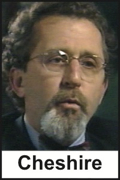Rascals case in brief
In the beginning, in 1989, more than 90 children at the Little Rascals Day Care Center in Edenton, North Carolina, accused a total of 20 adults with 429 instances of sexual abuse over a three-year period. It may have all begun with one parent’s complaint about punishment given her child.
Among the alleged perpetrators: the sheriff and mayor. But prosecutors would charge only Robin Byrum, Darlene Harris, Elizabeth “Betsy” Kelly, Robert “Bob” Kelly, Willard Scott Privott, Shelley Stone and Dawn Wilson – the Edenton 7.
Along with sodomy and beatings, allegations included a baby killed with a handgun, a child being hung upside down from a tree and being set on fire and countless other fantastic incidents involving spaceships, hot air balloons, pirate ships and trained sharks.
By the time prosecutors dropped the last charges in 1997, Little Rascals had become North Carolina’s longest and most costly criminal trial. Prosecutors kept defendants jailed in hopes at least one would turn against their supposed co-conspirators. Remarkably, none did. Another shameful record: Five defendants had to wait longer to face their accusers in court than anyone else in North Carolina history.
Between 1991 and 1997, Ofra Bikel produced three extraordinary episodes on the Little Rascals case for the PBS series “Frontline.” Although “Innocence Lost” did not deter prosecutors, it exposed their tactics and fostered nationwide skepticism and dismay.
With each passing year, the absurdity of the Little Rascals charges has become more obvious. But no admission of error has ever come from prosecutors, police, interviewers or parents. This site is devoted to the issues raised by this case.
On Facebook
Click for earlier Facebook posts archived on this site
Click to go to
Today’s random selection from the Little Rascals Day Care archives….
Click for earlier Facebook posts archived on this site
Click to go to
Today’s random selection from the Little Rascals Day Care archives….
A bit of doubt creeps into claims of child abuse
Dec. 26, 2012
By 1993 the moral panic was at last retreating from therapists’ offices, courtrooms and the media. That timing gives “Ritual Abuse: What It Is, Why It Happens, and How to Help” a peculiar place in its genre.
Although the pseudonymous “Margaret Smith” is a supposed “survivor and researcher of ritual abuse,” her advocacy lacks the blind certitude of a “Nursery Crimes: Sexual Abuse in Day Care” (1988) or a “Don’t Make Me Go Back, Mommy: A Child’s Book about Satanic Ritual Abuse” (1990).
“If there is even a small chance that one ritual abuse claim is true,” Smith begins, “we owe it to all potential victims to explore the problem of ritual abuse in greater depth.” Such unexpected tentativeness! Is she doubting even her own claim of victimhood? Or did an editor at HarperSanFrancisco awaken just in time to insist on at least a façade of rationality?
Unfortunately, the rest of the book alternates Smith’s first-person accounts of her ritual-abuse-caused “multiple personality disorder” with a predictable rollout of junk statistics. Could anyone be surprised, for instance, that among “adult survivors of ritual abuse,” fully 84 percent reported having witnessed “mutilation or killing of animals/humans”?
Who do that voodoo? Why, prosecution’s ‘experts’
Nov. 14, 2012
“Prosecutors building these high-profile cases well understood the problems posed by the strange charges and the fantasy-riddled narratives of the child plaintiffs. How could they make credible to jurors the extraordinary prowess of defendants who could assault whole classes of preschoolers daily, dressing and undressing 20 or more, all accomplished in a half hour’s time, in a busy school, with no one noticing, no child ever sent home with mismatched socks?…
“Jurors had to be given a reason that 4-year-olds could be raped with butcher knives that left them uninjured, could be tied naked to trees and raped in broad daylight….
“The state’s solution lay with their experts – witnesses who could explain and render such mysteries comprehensible.”
– From “No Crueler Tyrannies: Accusation, False Witness and other Terrors of Our Times” by Dorothy Rabinowitz (2003)
Ah, those invaluable mystery-solving experts – such as Eileen Treacy of the Kelly Michaels trial, Kee MacFarlane of McMartin and of course Mark “Where there’s smoke….” Everson of Little Rascals.
What would prosecutors have done without them? (Probably, a helluva lot less harm.)
Defending Betsy Kelly? Prepare to be stalked
 Sept. 18, 2013
Sept. 18, 2013
“Joseph B. Cheshire V, Betsy Kelly’s attorney, says the believers in town remain so hostile to the heretics who profess any disbelief over the charges that he no longer feels comfortable vacationing at nearby Nags Head. ‘Good,’ says one prominent Little Rascals father. ‘I almost killed myself last summer running that extra distance past his house, just so he’d know that I knew he was there.’ ”
– From “The Demons of Edenton” by Lisa Scheer and Edward Cone in Elle magazine (November 1993) Download article here
“During (the Little Rascals case), Cheshire was the victim of assaults and for a time wore a bullet-proof vest.”
– From “Nationally known criminal defense attorney Joe Cheshire (’73) talks about his colorful career” by John Trump at Wake Forest University School of Law (April 5, 2010)
For Edenton, ‘Little Rascals is unfinished business’

visitedenton.com
Hayes Plantation
May 16, 2016
The aftereffects of Little Rascals on Edenton have long interested me. With few exceptions the town’s residents, now fewer than 5,000 for the first time since 1970, seem dedicated to forgetting their prominent role in the “satanic ritual abuse” day-care panic. When the chief prosecutor ran for district attorney, the local paper published 17 stories and an endorsement editorial without mentioning Little Rascals.
One Edenton innkeeper even deleted mention of the case from the town’s Wikipedia page.
So I’m always glad to see another perspective. This is from a note sent by a former resident:
“I was excited to see your Facebook page on Little Rascals. I had been looking for copies of the PBS programs for years and had only uncovered some poor quality copies.
“I have many friends in Edenton, which made viewing ‘Innocence Lost’ all the more interesting. I began to know Edenton right at the tail end of the saga. For me its attractiveness was the sense that I was in a very different place, a different culture from home. Quiet, peaceful, slow-paced. But we concluded this was no place to live. Yes, some nice people to be found, but overall, pretty stifling.
“The town leaders still have some things to answer for about Little Rascals, and I suspect that until there is a process of reconciliation, the town will remain a troubled place, though it does a good job putting on a facade.
“Little Rascals is unfinished business. The problem is that the power structure sees no reason for change. There is such a direct link to the plantation mentality here in eastern North Carolina (which also saw no reason to change), it’s not even funny.”
![]()











0 CommentsComment on Facebook